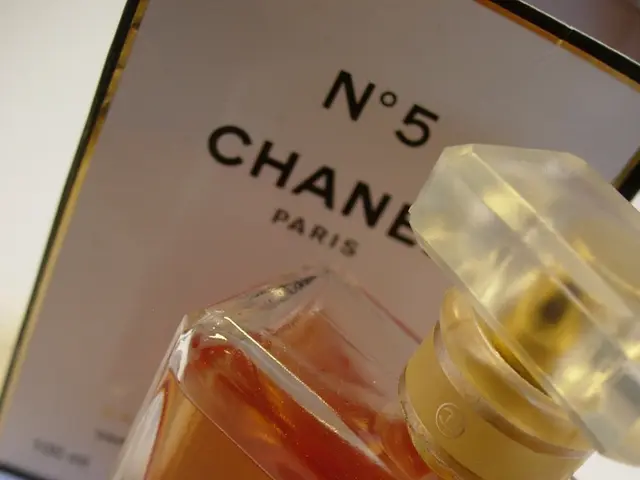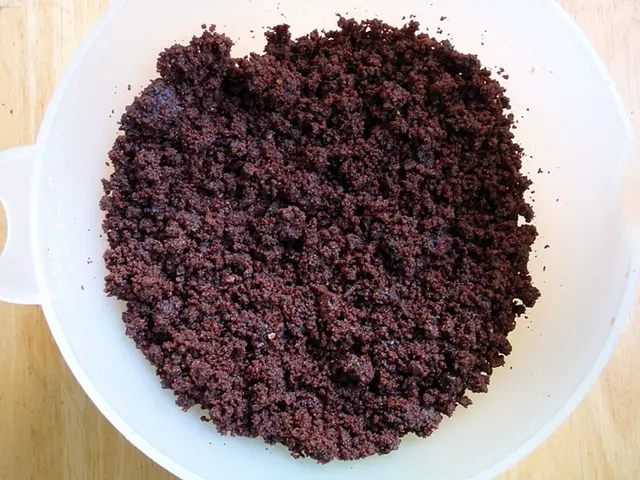Child's Chest Rash: Classifications, Indications, and Remedies
Rashes on a child's chest can be a cause for concern for many parents. This article aims to provide a clear and concise summary of the common causes, symptoms, and treatments for various chest rashes that children may experience.
Erythema Toxicum Neonatorum
A common, benign newborn rash, erythema toxicum neonatorum, is caused by a newborn's skin reacting to the environment. Small red blotches with a central yellow-white papule usually appear within the first week of life. Fortunately, no treatment is needed as it resolves spontaneously within days to weeks.
Ringworm (Tinea Corporis)
Ringworm is a contagious fungal infection that can cause itchy, ring-shaped red patches with raised, scaly edges and clearer centers. It is contracted through skin contact or shared personal items. Over-the-counter antifungal creams like clotrimazole, miconazole, terbinafine, and keeping the area clean and dry can help treat ringworm.
Fifth Disease (Erythema Infectiosum)
Fifth disease, caused by the parvovirus B19 infection, is characterised by a "slapped cheek" appearance on the face and a red, lacy rash spreading to the chest and limbs. Supportive care is typically all that's needed for this self-limiting condition.
Chickenpox (Varicella)
Chickenpox is a viral disease that causes itchy, blister-like rashes to appear on the chest, back, and face before spreading on the body. The blisters burst and scab over. Supportive care with antihistamines for itching, antiviral medications in some cases, and vaccination can help manage chickenpox.
Roseola Infantum
Roseola infantum, also known as sixth disease, is a viral infection caused by human herpesvirus 6 or 7. It is marked by a sudden high fever lasting a few days, followed by a pinkish, flat or raised rash mainly on the chest and trunk. The rash typically resolves on its own.
Impetigo
Impetigo is a bacterial infection, commonly caused by Staphylococcus aureus or Streptococcus. It presents as red sores around cuts or insect bites that develop into fluid-filled blisters, which burst and form yellowish crusty rash, often on the torso and face. Topical and/or oral antibiotics are used to treat impetigo.
Hives (Urticaria)
Hives are raised, itchy, red or pale welts on the skin that can appear anywhere, including the chest. They are caused by allergic reactions, infections, heat, or unknown triggers. Antihistamines and avoiding known triggers are the primary treatments for hives.
Scarlet Fever
Scarlet fever is a disease caused by group A Streptococcus bacterial toxin. It presents as a fine, red rash feeling like sandpaper, starting on the chest/trunk and spreading. Strawberry tongue and a sore throat are also common symptoms. Antibiotics and supportive measures for symptoms are used to treat scarlet fever.
Heat Rash (Miliaria)
Heat rash is a common condition in hot, humid conditions, caused by blockage of sweat ducts. It appears as small red bumps or clear blisters, often on the chest, neck, back. Keeping skin cool and dry, loose clothing, and avoiding overheating can help manage heat rash.
It is essential to consult a healthcare provider for proper diagnosis as some rashes can mimic others but require different treatments. If a child exhibits symptoms such as blistering or skin that peels off in sheets, diarrhea and abdominal pain, fever with extreme irritability or inconsolability, purple or blood-colored dots or pinpoint spots, hives with trouble breathing, fever with swelling of the mouth, lips, or tongue, these may indicate severe skin conditions.
Resting, drinking plenty of fluids, applying moisturizer to relieve any itch, taking acetaminophen for fever, and taking a cool bath with baking soda or colloidal oatmeal can help ease symptoms of fifth disease, chickenpox, and roseola infantum. Transient neonatal pustulosis, a variant of ETN, is seen in babies with dark skin tones. Getting the chickenpox vaccine is a safe and effective way to prevent the disease. Fifth disease and roseola infantum may not be as clear on dark skin tones. Impetigo is a condition caused by staph or strep bacteria and presents as plaques with a honey-coloured crust or fluid-filled blisters. Other viral infections that can cause chest rashes include undisclosed specific viral infections. Antifungal medications are used to treat ringworm. Hives, or urticaria, are raised, itchy bumps or welts that can appear anywhere on the body but commonly occur on the chest, back, and abdomen. Ringworm is a fungal skin infection that causes raised, sometimes itchy, circular rashes with slightly raised, scaly edges. Fifth disease is a viral infection caused by parvovirus B19, also known as "slapped cheek syndrome." Roseola infantum, or sixth disease, is a viral infection caused by the human herpesvirus 6. It mainly affects young children. Antihistamines are the primary treatment for hives. Heat rash appears as tiny bumps, pimples, or blisters and is not a severe condition, requiring only management to decrease sweating. Scarlet fever is a disease caused by group A Streptococcus bacteria and presents as small, raised, blanching rashes that feel like sandpaper. Treatment for impetigo includes topical or oral antibiotics. Erythema toxicum neonatorum (ETN) is a harmless condition that appears as firm yellow to white papules or pustules on the chest of many full-term infants.
- A common newborn rash, erythema toxicum neonatorum, is benign and resolves spontaneously, requiring no treatment.
- Ringworm, a contagious fungal infection, can cause itchy, ring-shaped red patches with raised, scaly edges and clear centers.
- Fifth disease, caused by parvovirus B19, presents as a "slapped cheek" appearance and a red, lacy rash spreading to the chest and limbs.
- Chickenpox, a viral disease, causes itchy, blister-like rashes to appear on the chest, back, and face before spreading on the body.
- Roseola infantum, or sixth disease, is a viral infection marked by a sudden high fever, followed by a pinkish, flat or raised rash mainly on the chest and trunk.
- Impetigo, a bacterial infection, presents as red sores around cuts or insect bites that develop into fluid-filled blisters, which burst and form yellowish crusty rash.
- Hives are raised, itchy, red or pale welts on the skin, caused by allergic reactions, infections, heat, or unknown triggers.
- Scarlet fever, caused by group A Streptococcus bacterial toxin, presents as a fine, red rash feeling like sandpaper, starting on the chest/trunk and spreading.
- Heat rash, common in hot, humid conditions, appears as small red bumps or clear blisters, often on the chest, neck, back, and requires management to decrease sweating.
- Consult a healthcare provider for proper diagnosis as some rashes can mimic others but require different treatments.
- Resting, drinking plenty of fluids, applying moisturizer, and taking acetaminophen can help ease symptoms of fifth disease, chickenpox, and roseola infantum.
- Transient neonatal pustulosis, a variant of ETN, is seen in babies with dark skin tones.
- Getting the chickenpox vaccine is a safe and effective way to prevent the disease.
- Fifth disease and roseola infantum may not be as clear on dark skin tones.
- Antifungal medications are used to treat ringworm, while antihistamines are the primary treatment for hives.




